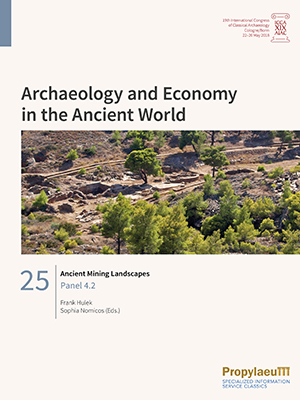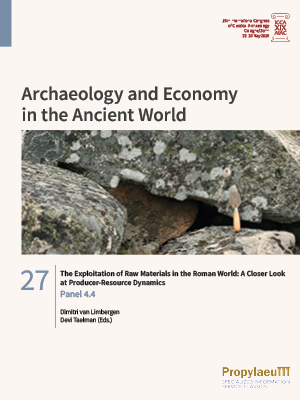Becker, Fabian
Ancient Mining Landscapes: Panel 4.2
The economic importance of raw material exploitation, especially metal mining, for communities in antiquity has long since been addressed. Only during recent decades, however, have scholars increasingly focused the material remains. These include not only the primary mining remains, such as underground workings, process residues and installations for beneficiation, but also habitational sites and infrastructural remains that emerged in the course of exploitation.
The intention of this panel at the 19th International Congress for Classical Archaeology was to provide an insight on existing and emerging research on landscapes that were distinctly transformed by mining. It aimed furthermore at discussing how mining could affect not only the natural but also the cultural landscape. By focusing on select case studies, the intention was to identify the material characteristics of such areas, to highlight and explain differences and to discuss possible recurring infrastructural and organisational patterns.
The Exploitation of Raw Materials in the Roman World: A Closer Look at Producer-Resource Dynamics: Panel 4.4
Compared to other pre-modern economies, the Roman world stands out for having developed a highly specialised and very productive manufacturing sector. This development led to the widespread and large-scale extraction of raw materials. Even in a territory as large as the Roman Empire, such activities put major
pressure on the land. Strategies of resource exploitation and conservation were thus essential in dealing successfully with the limited availability of these resources in the medium or long term, and to ensure the sustainability of the Roman exploitation model. This volume deals with the various ways in which natural resources were exploited and managed in the Roman world. It focuses on if, when, where and how the Romans pursued a harmonious balance between the limited availability of a particular resource and the law of supply and demand. The case studies in this volume cover various key areas of the Western Roman world – from Italy and the island of Elba, over coastal Croatia to Central-Eastern Gaul and the Pannonian limes – and discuss in particular the fi sh industry, iron smelting, deforestation and forest management, the stone trade and the exploitation of thermo-mineral resources.








